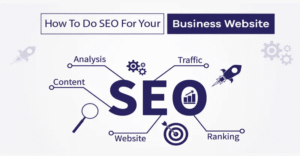
SEO in the Age of Core Web Vitals Optimization: Enhancing Your Website for Google’s Latest Ranking Factors
Core Web Vitals optimization is now crucial for SEO success, as Google’s emphasis on user experience has brought these metrics to the forefront of ranking considerations. Optimizing your website for Core Web Vitals is essential to stay competitive. This article will cover what Core Web Vitals are, why they matter, and how to improve your website’s performance to meet Google’s standards.
What Are Core Web Vitals?
Core Web Vitals are key performance metrics introduced by Google to evaluate user experience. They consist of:
- Largest Contentful Paint (LCP): Measures how fast the largest element of your page loads. The optimal time is under 2.5 seconds.
- First Input Delay (FID): Tracks the time it takes for your site to respond to user interactions. A good FID score is below 100 milliseconds.
- Cumulative Layout Shift (CLS): Monitors unexpected layout shifts during loading. A CLS score lower than 0.1 is ideal to maintain a smooth, stable interface.
Why Core Web Vitals Matter
Core Web Vitals optimization is a critical part of modern SEO because Google incorporates these metrics into its ranking algorithm. Pages that deliver faster load times, better interactivity, and a more stable layout are more likely to achieve higher search rankings. By focusing on page experience metrics like LCP, FID, and CLS, businesses can improve both their rankings and user engagement.
Mobile-First Indexing SEO
In today’s digital landscape, Google’s mobile-first indexing ensures that your website’s mobile version is prioritized for ranking purposes. This makes Core Web Vitals optimization even more critical, as most users access websites via mobile devices. Ensuring your website loads quickly and provides a stable, interactive experience on mobile is essential for maintaining strong SEO performance. Focus on optimizing for mobile by reducing unnecessary resources, compressing images, and enhancing overall speed to meet mobile-first indexing SEO standards.

How to Optimize for Core Web Vitals
Optimizing your website involves technical improvements aimed at reducing load times, increasing responsiveness, and enhancing stability. Here are actionable tips for website speed improvement and more:
a) Improve Largest Contentful Paint (LCP)
- Optimize images by compressing and resizing them for faster loading.
- Minimize server response time by utilizing a reliable hosting provider, caching, and a content delivery network (CDN).
- Remove render-blocking resources like unnecessary JavaScript and CSS files that delay main content loading.
b) Enhance First Input Delay (FID)
- Reduce JavaScript execution by optimizing and breaking up long tasks.
- Use browser caching to prevent delays in re-downloading resources on return visits.
c) Reduce Cumulative Layout Shift (CLS)
- Specify dimensions for media to avoid layout shifts as content loads.
- Use stable design elements like placeholders to prevent unexpected movements on the page.
Tools for Measuring Core Web Vitals
To measure Core Web Vitals, tools like Google Page Speed Insights, Lighthouse, and Search Console provide detailed insights. These tools offer data on how your site performs on the page experience metrics and recommend steps for improvement.
Achieving Peak Website Performance With Core Web Vitals
Maximizing your website’s performance starts with optimizing Core Web Vitals. By focusing on improving load times, interactivity, and layout stability, your site can rank higher on Google and deliver a better user experience. Our expert services are designed to help you meet these standards, ensuring faster page loads, smoother interactions, and more satisfied visitors.
Conclusion
Optimizing for Core Web Vitals is now indispensable for improving your website’s technical SEO best practices and maintaining high visibility in search engine results. Prioritizing better load times, faster interactivity, and a stable layout will not only improve rankings but also provide a superior user experience.
